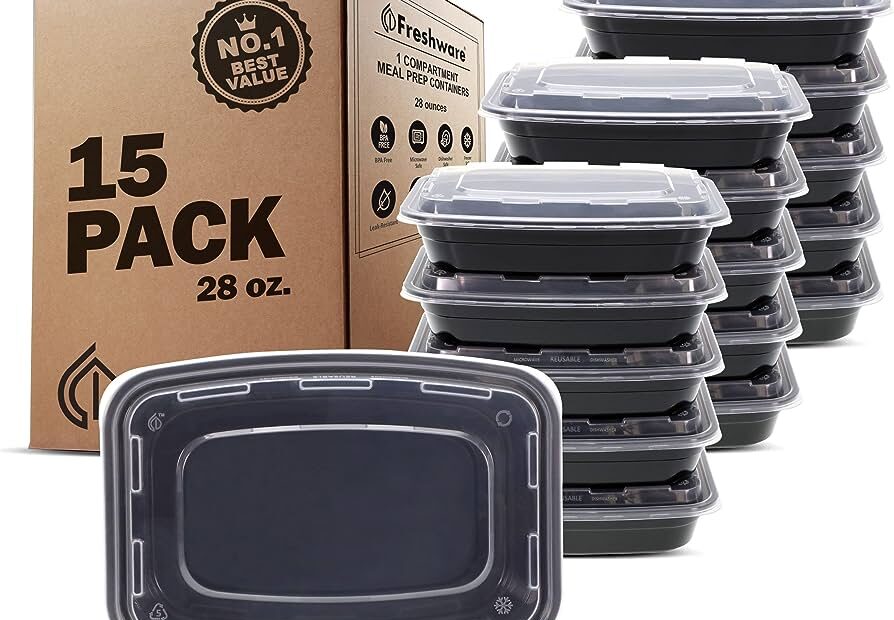Hot shot trucking packaging and labeling is important for ensuring safe transport and delivery of goods. Proper packaging and labeling help in preventing damage and ensuring accurate handling and identification of shipments.
Understanding The Impact Of Packaging And Labeling On Safe And Efficient Delivery
Understanding the impact of packaging and labeling is crucial for safe and efficient delivery in hot shot trucking. Proper packaging and labeling ensure that goods are protected during transportation, while also allowing for easy identification and handling, resulting in a streamlined delivery process.
Packaging And Labeling As Crucial Elements In Hot Shot Trucking
Proper packaging and labeling play a crucial role in the safe and efficient delivery of goods in the hot shot trucking industry. By understanding the impact of packaging and labeling on the overall process, businesses can mitigate risks and ensure smooth operations.
Let’s delve into why packaging and labeling matter in hot shot trucking.
Packaging:
- Protection: The primary purpose of packaging is to protect the goods during transportation. Robust packaging materials safeguard the items from damage caused by bumps, vibrations, and sudden stops.
- Space optimization: Efficient packaging reduces the space occupied by each shipment, allowing for more items to be transported at once. This not only improves efficiency but also reduces costs for both the shipper and the carrier.
- Handling ease: Proper packaging ensures that goods can be easily handled by the truck drivers and loaders. Simple packaging designs allow for quick loading and unloading, saving time and effort.
- Compliance: Packaging must adhere to regulatory requirements, especially when transporting hazardous materials. Compliance with safety standards ensures that both the goods and the people involved in the transportation are protected.
Labeling:
- Identification: Clear and accurate labeling enables the easy identification of goods, which is vital for both the shipping company and the consignee. Proper labeling includes details such as product names, quantities, addresses, and any special instructions.
- Safety information: Labels should clearly indicate any potential hazards associated with the goods being transported. This information helps truck drivers and handlers take necessary precautions to prevent accidents or mishandling.
- Regulatory compliance: Labels must comply with relevant regulations, including those related to hazardous materials or perishable goods. Accurate labeling ensures adherence to legal requirements and reduces the risk of penalties or fines.
- Tracking and traceability: Labels with unique identifiers, such as barcodes or QR codes, enable efficient tracking and traceability of goods. This allows for real-time monitoring and smooth coordination throughout the transportation process.
Proper packaging and labeling not only mitigate risks in hot shot trucking but also ensure that deliveries are made smoothly and efficiently. By prioritizing these elements, businesses can safeguard their goods, protect their reputation, and contribute to a seamless supply chain experience.
Packaging Tips To Ensure Safe Delivery
Ensure the safe delivery of your hot shot trucking packages with these packaging tips. Properly label and secure your items to prevent damage during transportation.
Hot Shot Trucking Packaging and Labeling:
Choosing The Right Packaging Materials And Containers:
- Select a sturdy and reliable shipping box or container that can withstand the transportation process without compromising the contents.
- Opt for durable materials such as corrugated cardboard or hard plastic to provide adequate protection.
- Consider the size of the package and the weight of the items to ensure the chosen container is appropriate.
- Use suitable packaging materials such as bubble wrap, packing peanuts, or foam inserts to provide cushioning and prevent damage during transit.
- Avoid using damaged or worn-out packaging materials, as they may not offer sufficient protection.
Securing And Protecting Items Inside The Packages:
- Properly wrap each item individually to protect them from scratches, impact, or moisture.
- Use high-quality tape to secure the wrapping and seal the packages effectively.
- Make sure to apply extra layers of protection for fragile items, such as fragile stickers or “Handle With Care” labels.
- Place additional cushioning materials around the items to prevent movement inside the package during transportation.
- Use dividers or compartments for delicate items to keep them separated and protected.
Preventing Damage During Loading And Unloading:
- Clearly label the package with appropriate information, including the destination address, return address, and contact details.
- Use a shipping label holder or pouch to protect the label from getting torn or damaged.
- Ensure proper handling instructions are displayed on the package, especially for items that require special care.
- Communicate specific instructions to the shipping company or trucking service to guarantee careful handling during loading and unloading.
- Consider using pallets or dunnage to safely stack packages, reducing the risk of damage from shifting or falling during transport.
By following these packaging tips, you can increase the chances of a safe and secure delivery, minimizing the potential for damage during hot shot trucking. Remember to always prioritize the use of proper packaging materials, secure the items inside the packages, and communicate any specific handling instructions to ensure the successful transportation of your goods.
Labeling Best Practices For Efficient Delivery
Efficient hot shot trucking relies on sound labeling practices for streamlined delivery. Proper packaging and labeling ensure smooth operations and accurate shipments, supporting the seamless transportation of goods.
Efficient labeling plays a crucial role in the hot shot trucking industry, ensuring that packages reach their destinations both accurately and on time. By including key information on the labels, ensuring proper placement and visibility, and leveraging technology for accurate tracking and documentation, hot shot truckers can optimize their delivery processes.
Let’s delve into best practices for labeling to enhance efficiency.
Including Key Information On The Labels:
- Consignee details: Clearly display the name, address, and contact information of the intended recipient to minimize delivery errors.
- Origin address: Provide the originating address as a reference to prevent confusion in multi-drop shipments.
- Package contents: Include a concise description of the contents, such as “Fragile,” “Perishable,” or “Hazardous,” to guide handling procedures during transit.
- Handling instructions: Highlight specific instructions for fragile, delicate, or temperature-sensitive items to ensure proper care and protection.
- Tracking information: Incorporate a visible tracking number or barcode to enable easy monitoring of the package’s journey.
Ensuring Proper Placement And Visibility Of Labels:
- Clear and visible placement: Affix labels in a prominent location on the package, ensuring they are not obstructed by seams, strapping, or other materials.
- Orientation consistency: Maintain consistent placement by affixing labels with arrows indicating the top side of the package to facilitate proper handling and loading.
- Protection against damage: Utilize label protectors or specialized printing techniques, such as weather-resistant materials or water-resistant inks, to ensure labels remain intact and legible throughout transit.
- Size and font legibility: Opt for appropriately sized labels with legible fonts, ensuring that the information can be easily read even from a distance or in low-light conditions.
Using Technology For Accurate Tracking And Documentation:
- Barcode scanners and mobile apps: Leverage technology by using barcode scanners or mobile applications to quickly and accurately capture package information, reducing manual errors.
- Electronic data interchange (EDI): Implement EDI systems to streamline the exchange of shipping and labeling data between shippers and truckers, minimizing the need for manual input and improving efficiency.
- Real-time tracking systems: Utilize GPS-based tracking systems integrated with labels to provide real-time updates on package location, allowing for proactive management of any delays or disruptions.
- Digital documentation: Embrace digital documentation solutions that eliminate the hassle of physical paperwork, making it easier to keep track of shipments, manage delivery confirmations, and maintain accurate records.
By following these labeling best practices, hot shot truckers can ensure that packages are accurately identified, handled properly, and delivered efficiently. Implementing these practices not only reduces errors and delays but also enhances customer satisfaction and strengthens a trucking company’s reputation within the industry.
Stay ahead of the game by optimizing your labeling processes and leveraging technology to facilitate efficient deliveries.
Compliance Requirements For Packaging And Labeling In Hot Shot Trucking
Hot shot trucking requires strict compliance with packaging and labeling regulations. Ensure your shipments meet all requirements to avoid delays and penalties.
Hot shot trucking is a fast-paced and demanding industry that requires strict adherence to regulations and industry standards. When it comes to packaging and labeling, there are specific compliance requirements that drivers and businesses must follow to ensure the safe transportation of goods.
Understanding these requirements is crucial to maintaining legal and safety standards in hot shot trucking.
Understanding Regulations And Industry Standards:
- Packaging materials must be suitable and compatible with the contents they will carry to prevent leaks, spills, or damages.
- Proper packaging helps protect the goods during transit, preventing any potential loss or contamination.
- Packaging should also consider the nature of the cargo, such as hazardous materials, perishable items, or fragile goods, to ensure appropriate handling and storage.
Ensuring Compliance With Hazardous Materials Guidelines:
- When transporting hazardous materials, it is essential to comply with the regulations set by the Department of Transportation (DOT) and other relevant authorities.
- Hazardous materials must be correctly classified, packed, marked, labeled, and documented to guarantee safe handling and transport.
- Packaging for hazardous materials should be tested and meet specific standards to prevent leaks, reactions, or any harm to humans, property, or the environment.
Documenting And Maintaining Records For Legal And Safety Purposes:
- Hot shot trucking companies must maintain accurate records of packaging and labeling for legal and safety purposes.
- Documentation should include information about the contents of each shipment, packaging materials used, and any hazardous materials involved.
- These records should be readily available for inspection by regulatory authorities or in the event of an incident or emergency.
- Proper record keeping helps demonstrate compliance with regulations and ensures traceability in case of any issues.
In the highly regulated and safety-conscious hot shot trucking industry, compliance requirements for packaging and labeling play a significant role in ensuring the safe transportation of goods. By understanding regulations and industry standards, ensuring compliance with hazardous materials guidelines, and maintaining accurate records, hot shot trucking businesses can operate legally and safeguard the well-being of both their customers and the environment.
Enhancing Efficiency Through Streamlined Packaging And Labeling Processes
Enhance efficiency in hot shot trucking through streamlined packaging and labeling processes for maximum productivity. Efficient packaging and labeling practices can save time, reduce errors, and optimize the transportation of goods.
In the fast-paced world of hot shot trucking, efficient and accurate packaging and labeling processes play a vital role in ensuring smooth operations and timely deliveries. By establishing standardized procedures, implementing barcode scanning and labeling automation, and collaborating with suppliers for consistent practices, hot shot trucking companies can enhance their efficiency levels.
Let’s explore these strategies in more detail:
Creating Standardized Packaging Procedures:
- Streamlining the packaging process is crucial for hot shot trucking companies to maintain consistency and avoid any delays or errors.
- Standardized packaging procedures ensure that all shipments are prepared in the same manner, eliminating confusion and reducing the chances of damaged or misplaced items.
- By clearly defining packaging requirements, companies can train their employees to follow specific guidelines, resulting in faster and more efficient operations.
Implementing Barcode Scanning And Labeling Automation:
- Barcode scanning and labeling automation provide hot shot trucking companies with real-time visibility and accurate tracking of their shipments.
- Barcode scanning technology allows for quick identification and verification of packages, reducing the possibility of errors and improving overall efficiency.
- By implementing automation, companies can streamline the labeling process, eliminating the need for manual entry and reducing the risk of human errors.
- Automated labeling systems also ensure consistent and legible labels, making it easier for transportation personnel to handle and identify packages.
Collaborating With Suppliers For Consistent Packaging And Labeling Practices:
- Establishing consistent packaging and labeling practices with suppliers is crucial for seamless operations and customer satisfaction.
- By working closely with suppliers, hot shot trucking companies can align their packaging and labeling requirements, ensuring a standardized approach.
- Regular communication and collaboration with suppliers help identify any potential issues and resolve them proactively, minimizing disruptions in the shipping process.
- Consistent practices from suppliers also ensure that all packages are labeled correctly with the necessary information, improving efficiency and reducing errors.
Enhancing efficiency in hot shot trucking can be achieved through streamlined packaging and labeling processes. By creating standardized procedures, implementing barcode scanning and labeling automation, and collaborating with suppliers, companies can ensure smoother operations, reduce errors, and improve customer satisfaction.
So, invest in these strategies to optimize your hot shot trucking business and stay ahead of the competition.
Training And Communication For Effective Packaging And Labeling
Achieve effective packaging and labeling for your hot shot trucking business through comprehensive training and clear communication protocols. Enhance your operations with optimized practices and ensure the safe and efficient transport of goods.
Educating Personnel On Proper Packaging Techniques
- Conduct regular training sessions to educate staff on the importance of packaging and labeling in the hot shot trucking industry.
- Emphasize the significance of proper packaging techniques in ensuring the safety and integrity of goods during transportation.
- Train employees on how to choose appropriate packaging materials and sizes for different types of cargo.
- Teach proper handling and stacking methods to prevent damage or shifting of packages during transit.
- Provide guidelines on secure packaging practices, including the use of sealants, straps, and cushioning materials.
- Encourage proactive communication between packers and drivers to address any concerns or special requirements.
Ensuring Clear Communication Between Drivers And Shippers
- Promote effective communication channels between drivers and shippers to avoid confusion or delays in delivering shipments.
- Establish standardized communication protocols for discussing packaging details and any specific handling instructions.
- Emphasize the importance of timely updates and clear instructions between drivers and shippers.
- Utilize technology platforms or apps to streamline communication processes and facilitate real-time tracking and updates.
- Encourage drivers to confirm receipt of packaging instructions and address any concerns or issues promptly.
- Foster a collaborative approach, where drivers and shippers can communicate openly and find solutions to potential challenges.
Regularly Reviewing And Updating Packaging And Labeling Protocols
- Implement a systematic review process to ensure packaging and labeling protocols remain up-to-date and in line with industry standards.
- Regularly assess the effectiveness of existing protocols in terms of cargo safety, efficiency, and customer satisfaction.
- Seek feedback from drivers, shippers, and customers to identify areas for improvement in packaging and labeling practices.
- Consider external factors such as transportation regulations and industry trends when updating protocols.
- Collaborate with packaging suppliers to stay informed about new materials or technologies that may enhance packaging efficiency and security.
- Communicate any changes or updates in packaging and labeling protocols to all relevant stakeholders to ensure consistent adherence.
Remember, proper training and communication play crucial roles in effective packaging and labeling for hot shot trucking. By educating personnel, ensuring clear communication between drivers and shippers, and regularly reviewing and updating protocols, your business can enhance its packaging practices and deliver exceptional service to customers.
Monitoring And Evaluating Packaging And Labeling Performance
Packaging and labeling performance in hot shot trucking is monitored and evaluated to ensure the safe transport of goods. Through careful assessment, potential risks are identified and addressed, leading to improved efficiency and customer satisfaction.
Hot Shot Trucking Packaging And Labeling:
Implementing Quality Control Measures:
- Conduct regular inspections of packaging and labeling processes to ensure compliance with industry standards and regulations.
- Train employees on proper packaging and labeling techniques to maintain consistency and accuracy.
- Implement quality control checks at various stages of the packaging and labeling process to detect and rectify any errors or issues.
- Use standardized packaging materials and labeling templates to maintain uniformity and professionalism.
Analyzing And Addressing Areas For Improvement:
- Analyze data and feedback to identify trends or patterns that may indicate areas for improvement in packaging and labeling.
- Evaluate the efficiency and effectiveness of current packaging and labeling methods and make necessary adjustments.
- Continuously monitor product quality and customer satisfaction to spot potential problems and devise solutions.
- Collaborate with the packaging and labeling team to brainstorm innovative ideas for improvement and implement them.
Seeking Feedback From Customers And Stakeholders:
- Regularly communicate with customers and stakeholders to gather feedback on packaging and labeling.
- Conduct surveys or interviews to assess customer satisfaction with packaging and labeling processes.
- Actively listen to feedback and take necessary steps to address any concerns or suggestions.
- Engage in open and transparent communication with customers and stakeholders to build trust and maintain strong relationships.
By implementing quality control measures, analyzing areas for improvement, and seeking feedback from customers and stakeholders, businesses can effectively monitor and evaluate their packaging and labeling performance. This enables them to enhance quality, ensure compliance, and meet customer expectations.

Credit: www.nytimes.com
Key Considerations For Specialized Packaging And Labeling
Specialized packaging and labeling are crucial for hot shot trucking to ensure safe and efficient delivery. Factors such as industry regulations, product fragility, and transportation conditions must be considered when selecting the right packaging materials and labeling methods. This ensures that goods arrive intact and in compliance with quality standards.
Hot Shot Trucking: Packaging And Labeling
When it comes to hot shot trucking, proper packaging and labeling are crucial to ensure the safe transportation of goods. Whether you’re dealing with perishable items or fragile goods, there are key considerations to keep in mind. In this blog post, we’ll explore how to cater to specific freight requirements, adhere to industry-specific regulations and guidelines, and utilize specialized equipment and techniques for effective packaging and labeling.
Catering To Specific Freight Requirements:
- Perishable goods: When transporting perishable goods, it’s essential to use insulated packaging and include refrigerants like gel packs or dry ice. This helps maintain the desired temperature throughout the journey, preserving the quality and freshness of the products.
- Fragile items: Fragile items require careful handling to prevent damages during transit. Consider using cushioning materials such as bubble wrap, packing peanuts, or foam inserts to protect the goods from impact. Use sturdy boxes and secure the items with packing tape to minimize the risk of breakage.
Adhering To Industry-Specific Regulations And Guidelines:
- Hazardous materials: If you’re shipping hazardous materials, it is vital to comply with the regulations set forth by the Department of Transportation (DOT) and adhere to the Hazardous Materials Regulations (HMR). Proper labeling, packaging, and documentation are required to ensure the safety of everyone involved in the transportation process.
- Food and beverage: When transporting food and beverage products, it’s crucial to follow the guidelines and regulations provided by the Food and Drug Administration (FDA). This includes proper labeling of ingredients, allergens, nutrition facts, and ensuring that packaging materials are food-grade and safe for consumption.
Using Specialized Equipment And Techniques:
- Temperature-controlled trailers: Hot shot trucking often involves the transportation of temperature-sensitive goods. Using specialized temperature-controlled trailers helps maintain the desired climate for perishable items, pharmaceuticals, or other temperature-sensitive products.
- Custom crating: For oversized or unusually shaped items, custom crating may be necessary. This involves designing and fabricating crates specifically tailored to the dimensions and requirements of the unique cargo, ensuring a secure fit and maximum protection during transportation.
Hot shot trucking requires careful attention to packaging and labeling practices. By catering to specific freight requirements, adhering to industry regulations, and utilizing specialized equipment and techniques, you can ensure the safe and reliable transportation of goods. So, whether you’re dealing with perishable goods, fragile items, hazardous materials, or other specialized cargo, following these key considerations will contribute to a successful hot shot trucking operation.
The Future Of Packaging And Labeling In Hot Shot Trucking
Discover the future of packaging and labeling in hot shot trucking, with a focus on efficiency and convenience. Streamlined processes and innovative solutions ensure seamless delivery, providing optimal satisfaction for customers in this fast-paced industry.
Hot shot trucking is a fast-paced industry where timely deliveries are of utmost importance. To stay ahead in this competitive field, it’s crucial for hot shot truckers to embrace innovative packaging and labeling techniques. In this blog post, we will explore the future of packaging and labeling in hot shot trucking, focusing on three key aspects: embracing innovative technologies, sustainable practices, and industry trends.
Embracing Innovative Technologies (E.G., Iot, Rfid):
- Internet of Things (IoT): Leveraging IoT technology allows truckers to monitor and track their shipments in real-time. IoT sensors can be placed on packages to provide continuous updates on their location, temperature, and humidity levels. This ensures the delivery remains on time and the package remains intact throughout the journey.
- Radio Frequency Identification (RFID): RFID tags can be attached to packages, providing unique identification codes that can be scanned easily. This technology enables efficient inventory management, reduces manual errors, and speeds up the loading and unloading process. Truckers can effortlessly track their shipments using RFID readers, facilitating smoother operations.
- Integration with fleet management software: By integrating packaging and labeling data with fleet management software, hot shot truckers can optimize their routes, manage inventories, and enhance overall operational efficiency. This integration allows for seamless communication between drivers, dispatchers, and clients, ensuring a streamlined and error-free process.
Sustainable Packaging And Labeling Practices:
- Biodegradable materials: Hot shot truckers can contribute to a greener future by utilizing biodegradable packaging materials. Materials such as recycled cardboard, corn-based plastics, and eco-friendly adhesives are not only environmentally friendly but also promote a positive brand image.
- Minimalistic design: Implementing minimalist packaging designs not only reduces waste but also helps save costs. By using smaller boxes or eliminating unnecessary layers of packaging, hot shot truckers can reduce their carbon footprint while maximizing space efficiency during transportation.
- Eco-friendly labels: Opting for sustainable labeling options, such as vegetable-based inks and recyclable label materials, demonstrates a commitment to environmental responsibility. Furthermore, clearly displaying any recycling instructions on labels allows recipients to dispose of packaging material properly.
Industry Trends And Emerging Best Practices:
- Customized packaging: In a competitive market, having eye-catching packaging that stands out from the crowd can make a significant difference. Using tailored packaging designs and labels that reflect the company’s branding creates a memorable and unique delivery experience for customers.
- Safety regulations: Staying up-to-date with emerging safety standards and regulations is crucial in the hot shot trucking industry. Implementing proper labeling with clear warnings, handling instructions, and safety information ensures compliance with regulations and minimizes the risk of accidents or mishaps during transportation.
- Automation and robotics: As technology advances, hot shot trucking companies can take advantage of automation and robotics for packaging and labeling processes. Automated systems can streamline packaging operations, reduce manual errors, and improve overall efficiency, ultimately contributing to cost savings and increased customer satisfaction.
The future of packaging and labeling in hot shot trucking is rapidly evolving, driven by innovative technologies, sustainable practices, and emerging industry trends. By embracing these changes and staying ahead of the curve, hot shot truckers can enhance operational efficiency, reduce environmental impact, and provide an exceptional delivery experience for their clients.
Frequently Asked Questions For Hot Shot Trucking Packaging And Labeling
Is Hotshot Trucking Worth It 2023?
Yes, hotshot trucking can be worth it in 2023 as it offers potential for profitability and growth.
What Plates Do You Need For Hotshot?
You need specific plates for hotshot trucks.
How Do I Start A Hotshot Business Checklist?
To start a hotshot business, follow this checklist: 1. Determine your target market and the services you will offer. 2. Create a business plan and set your financial goals. 3. Register your business and obtain any necessary licenses or permits. 4.
Secure reliable transportation and equipment for your hotshot deliveries.
What Is The Max Weight A Hotshot Can Carry?
A hotshot can carry a maximum weight determined by its limit. The weight capacity may vary.
Conclusion
Effective packaging and labeling play a crucial role in the success of hot shot trucking operations. By ensuring that your products are secure, properly tagged, and easily identifiable, you can minimize the risk of damage during transportation and streamline the delivery process.
Incorporating sturdy materials, clear labels, and precise instructions can help protect your cargo and save valuable time. It is also essential to stay up-to-date with industry regulations and requirements to avoid any potential setbacks or fines. Investing in innovative packaging solutions and adopting eco-friendly practices not only benefits the environment but also enhances your brand image.
Remember, your packaging and labeling choices reflect your commitment to quality and professionalism. So, make sure to prioritize these aspects and maintain a competitive edge in the hot shot trucking industry.
- What Is the 11 Hour Limit: A Comprehensive Guide - June 7, 2024
- What Happens if You Drive on a Suspended License in Virginia - June 7, 2024
- Wilcox Justice Court Overview: Online Services & Legal Proceedings - June 6, 2024




